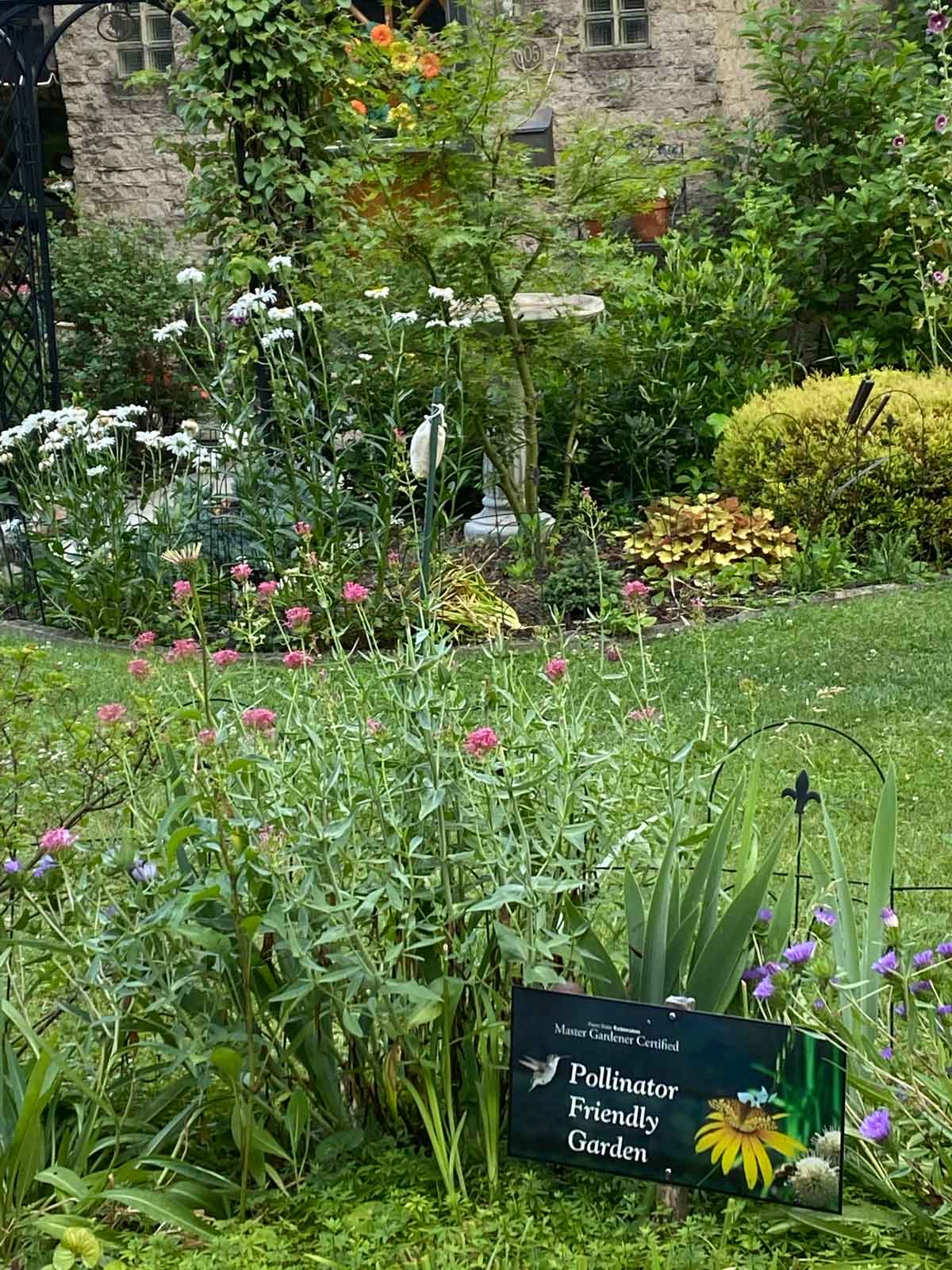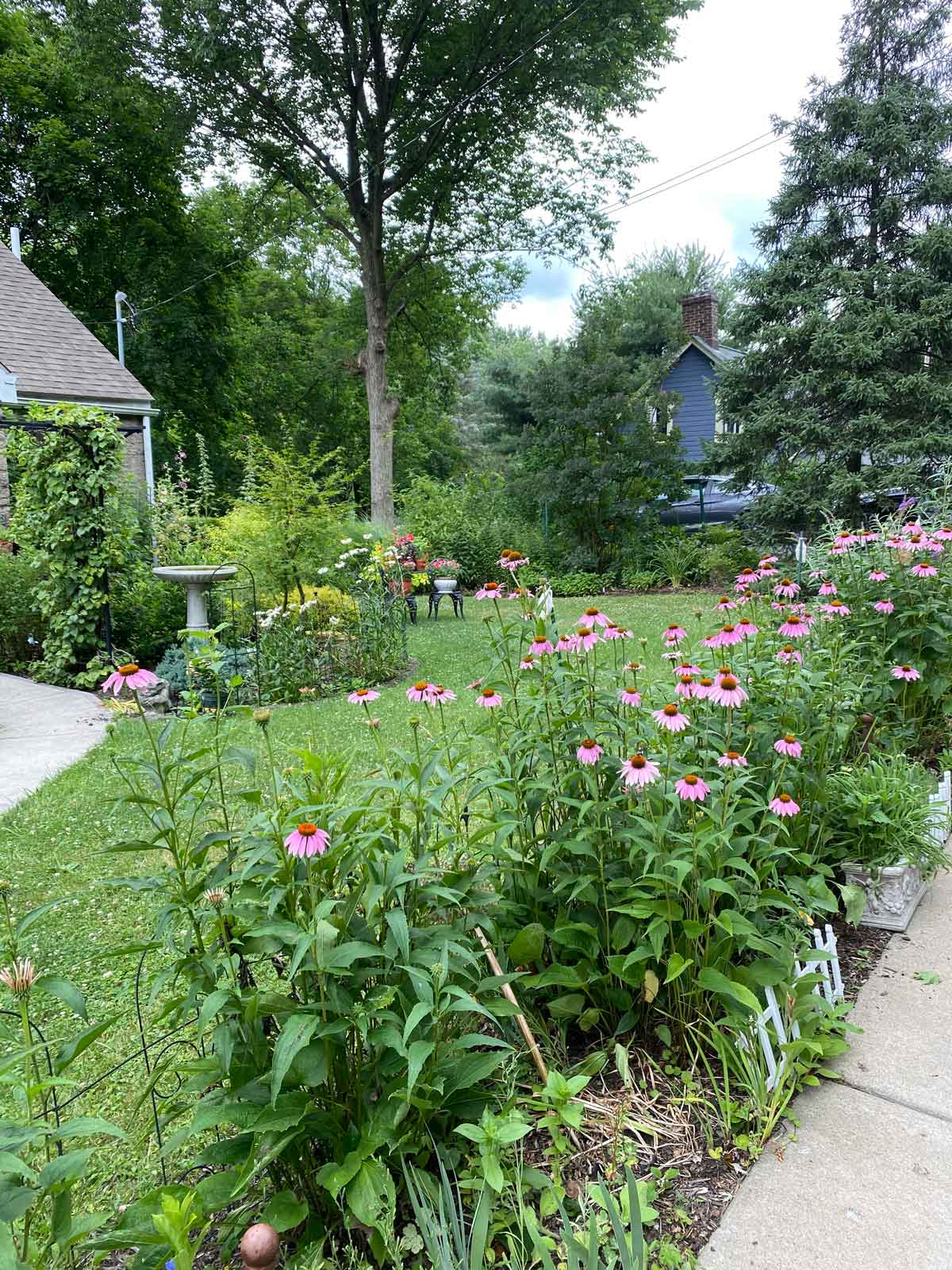Blog

Small Gardens, Big Impact: Native Plant Oasis
As the growing season comes to a close, we will be highlighting gardens of Western Pennsylvania that inspire us with their beauty and their positive impact on the environment.
Native Plant Oasis
Barbara Martin, Forest Hills
Barbara Martin created her Forest Hills garden with bees, birds, and butterflies in mind. She specifically wanted to support monarch butterflies, so she selected several species of milkweed (Asclepias) along with flowering plants that bloomed from early spring to late fall. She also chose native perennial plants and shrubs that provided food for wildlife. She has many butterfly host plants which support growing caterpillars. Some of her favorite plants are the native shrubs that she grows in her garden, including buttonbush (Cephalanthus floridus), smooth witherod (Viburnum nudum), blueberry bushes (Vaccinium spp.) and Virginia sweetspire (Itea virginica).
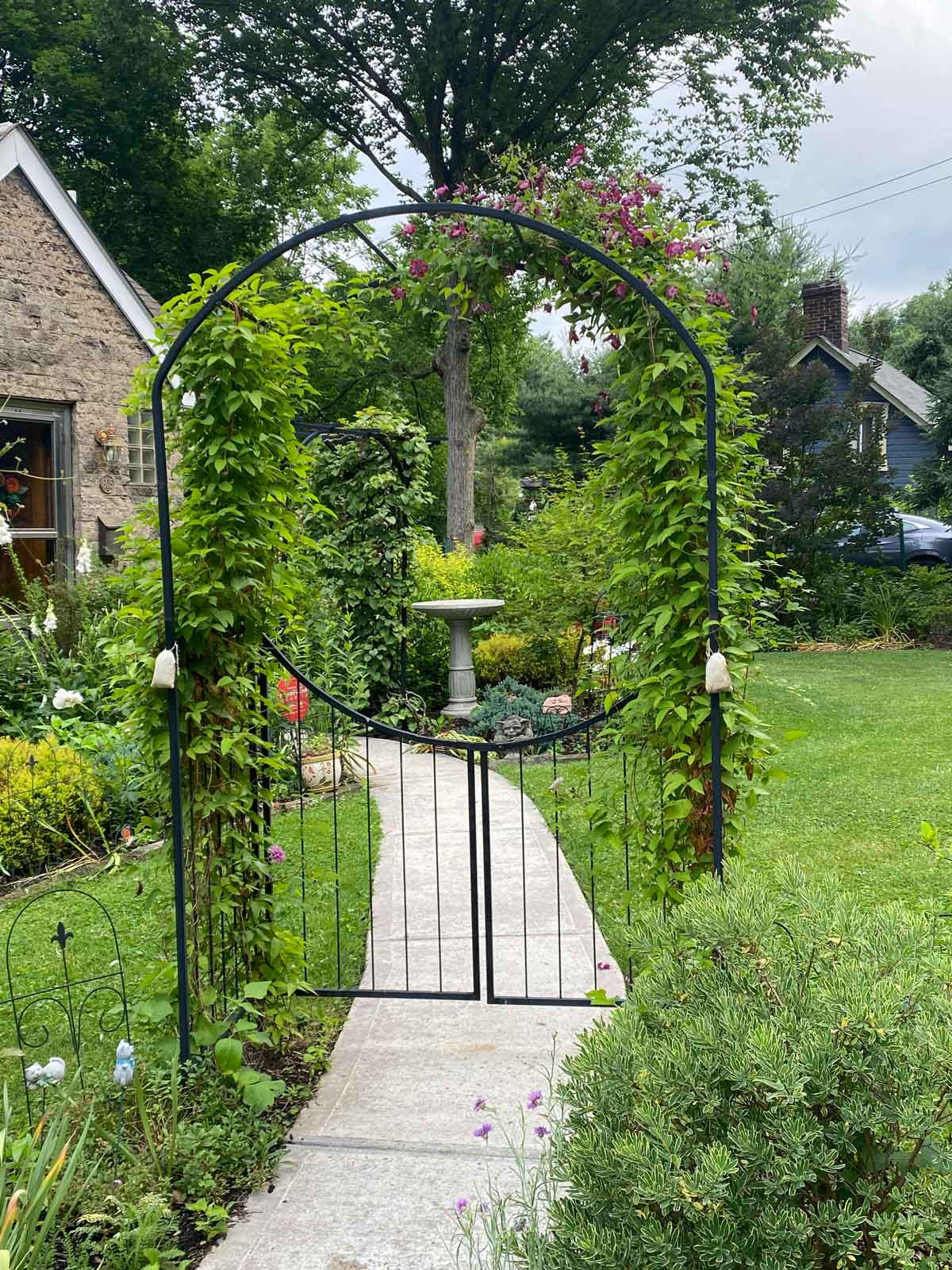
Barbara’s garden also includes many beautiful perennial plants, such as, foamflower (Tiarella), purple cone flower (Echinacea purpurea), New England Aster (Symphyotrichum novae-angliae), Joe-pye weed (Eutrochium purpureum), Dutchman’s breeches (Dicentra cucullaria) and Mountain mint (Pycnanthemum muticum). In addition to these perennial herbs and shrubs, Barbara grows show-stopping sun flowers that tower high about her garden. Of these garden beauties, Barbara says, “Nothing is more cheerful than seeing sunflower heads which seem to smile at one. Birds and insects love them as well so they are a win-win.”
A birdbath provides water while a trellis and gate create visual interest. Barbara’s garden design features a mix of textures, colors and heights, making for a beautiful wildlife garden.
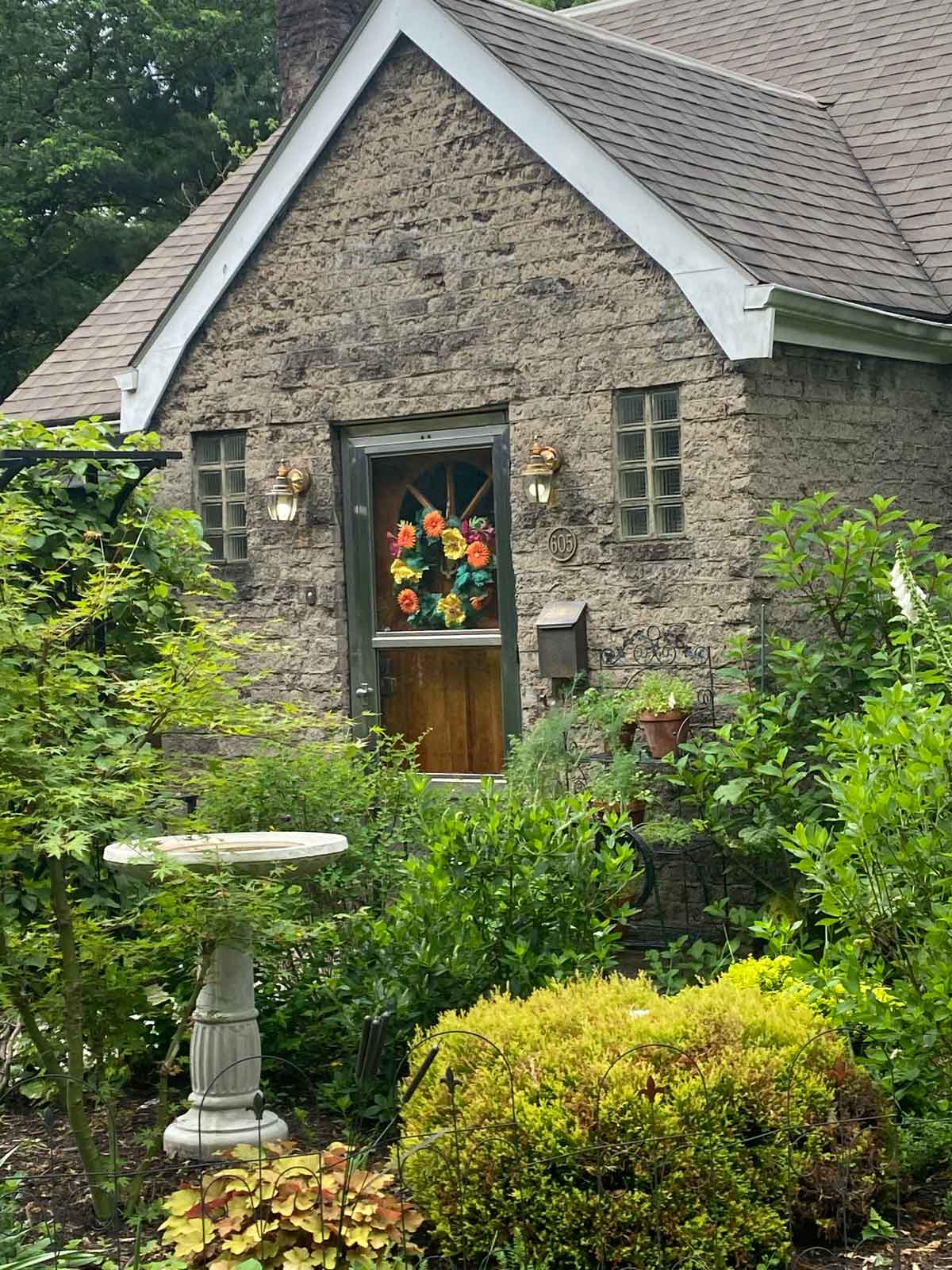
In addition to her focus on native plants for wildlife, Barbara practices other sustainable methods. She focuses on organic pest and disease control and uses soil tests to guide her soil fertility management practices. Barbara says that she started gardening organically when she learned about the problems associated with using synthetic chemicals for gardening; the information made her want to “explore gentler methods that are more in line with what nature needs instead of using the easy way out at my home.”
She also has vegetable gardens with herbs and flowers that attract beneficial insects. She’s planted the right plant in the right place and does little maintenance on her yard. Her garden is located close to a road that gets both car and foot traffic, she has placed many of her prized plants in close proximity to where they will be most enjoyed by her neighbors. Of this arrangement, she says, “I get great joy from seeing people take pictures of my garden or when they stop and ask questions about either the plants or methods I use for deer and pest control.”
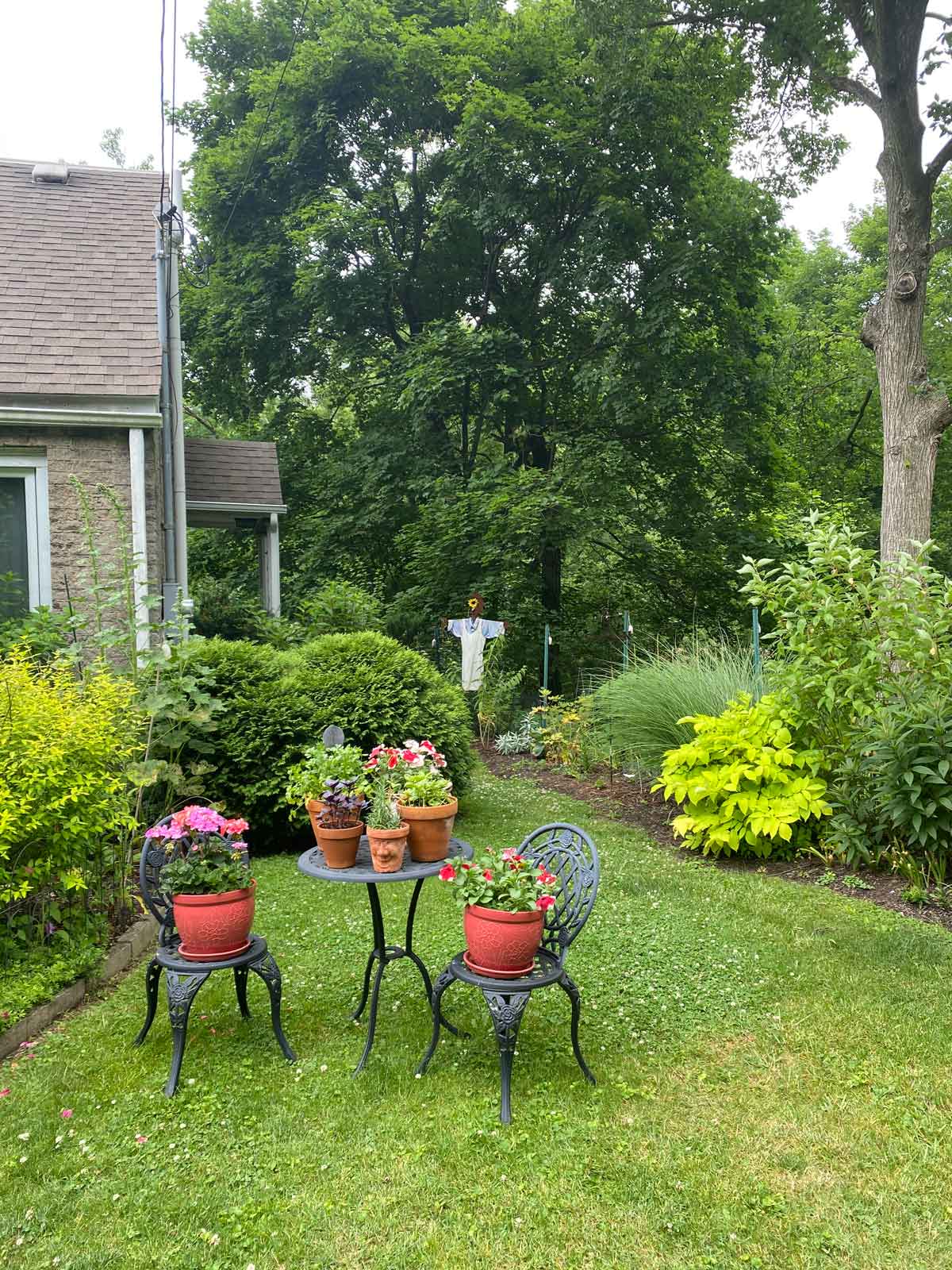
Barbara uses the morning to observe her property, keeping an eye on her plant’s needs, paying attention to potential pest concerns and noting gardening chores that need to be done that day. She says that she does all this with a “morning walk around the property, drinking coffee.”
We like the mix of perennial herbs, trees and shrubs with colorful blooms and the decorative, welcoming front gate. Barbara’s yard is inviting for both people and wildlife.
